Trafalgar Square |
|
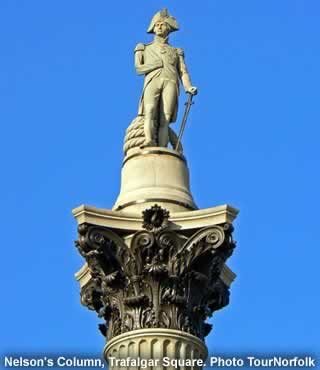 |
|||
London's most famous square and a memorial to Admiral Nelson, hero of the Napoleonic Wars |
||||||||||
Listen to this article |
||||||||||
|
||||||||||
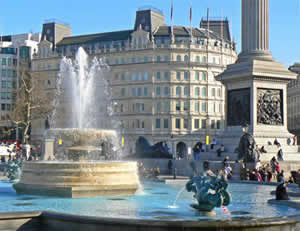 Trafalgar Square Photo TourNorfolk |
||||||||||
Trafalgar Square is one of Britain's most important London landmarks and a focus for national demonstration and celebration. The square is named after Spanish Cape Trafalgar, where in 1805 British forces, led by Admiral Horatio Nelson, defeated a combined French and Spanish Fleet, in the most significant naval battle of the Napoleonic Wars. |
||||||||||
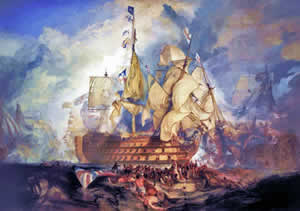 J. M. W. Turner painted this Battle of Trafalgar scene in 1822 Source WikiMedia (PD) |
||||||||||
|
||||||||||
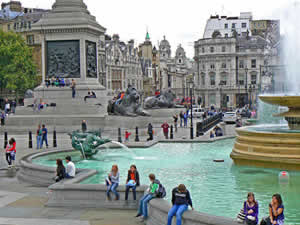 A typical view across Trafalgar Square Photo TourNorfolk |
||||||||||
John Nash first designed the layout of the Square in a Neo-classical style during the 1820s, but it was not until the 1840s that its focal point, Nelson’s Column was added. Admiral Nelson was one of Britain's best-loved heroes, after winning four notable naval battles, during which he lost an arm and one eye. The Battle of Trafalgar was his most famous, but also his last. The French and Spanish fleet lost 22 of their 33 ships during the Battle, whilst the British lost none, and Nelson died on the deck of H.M.S. Victory, leading his fleet. |
||||||||||
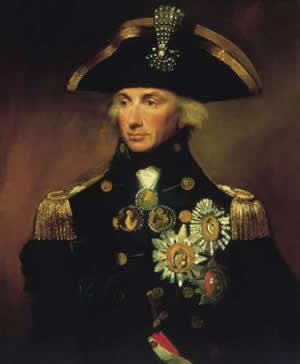 Admiral Horatio Nelson Source WikiMedia (PD) |
||||||||||
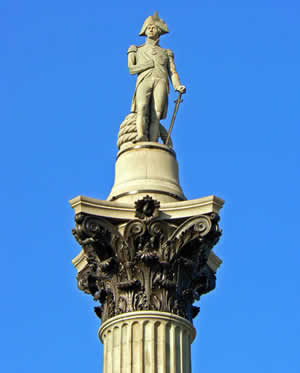 Nelson's Column, 182-feet (56-metres) including statue, which is exactly the same height as the main mast on H.M.S. Victory Photo TourNorfolk |
||||||||||
|
||||||||||
Acanthus leaves cast from British cannons decorate the top, and at the base are bronze panels depicting scenes from Nelson’s four victorious battles – the Nile, Copenhagen, Cape St Vincent and Trafalgar. Guarding the column are 4 great lions. These superb statues were designed by Edwin Landseer, and are cast from bronze cannons captured from the defeated French fleet. |
||||||||||
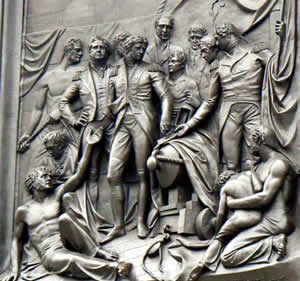 Nelson's battles, depicted on bronze panels at the foot of the column Photo TourNorfolk |
||||||||||
|
||||||||||
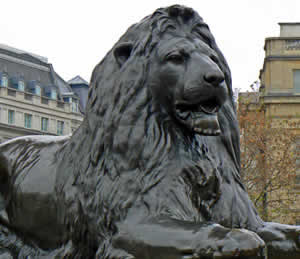 4 Great Lions, cast from captured French cannons Photo TourNorfolk |
||||||||||
At the corners of the square are stone plinths which carry bronze statues of King George IV on horseback, Sir Henry Havelock and Sir Charles James Napier, who were both Victorian major generals. The fourth pedestal was intended to carry a statue of King William IV, but insufficient funds and later disagreement, left it empty. Over the years, it has been used to display several official and unofficial visiting works of sculpture, including a model of David Beckham, placed by Madame Tussauds during the 2002 FIFA World Cup. |
||||||||||
|
||||||||||
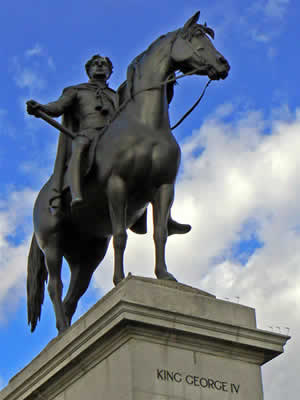 Statue of King George IV Photo TourNorfolk |
||||||||||
|
||||||||||
At the south end of the square you will find a statue of King Charles I on horseback. In 1675, this statue replaced the original site of the Charing Cross, erected by King Edward I in 1290. The king was so fond of his wife, Eleanor, that when she died, he marked the route of the funeral procession from Lincoln to her final resting-place at Westminster, with 12 crosses - each cross marking the spot where her coffin rested overnight. The final cross remained on this spot, until its removal during the English Civil War. 200 years later, a replica cross was placed in the forecourt at Charing Cross Station, which can still be seen today. |
||||||||||
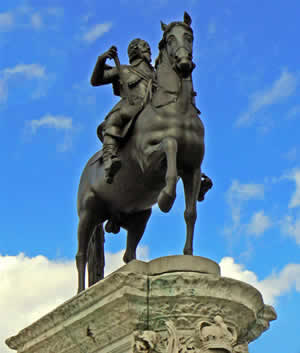 Statue of King Charles I Photo TourNorfolk |
||||||||||
|
||||||||||
|
||||||||||
Trafalgar Square is open 24 hours a day. The square holds temporary art exhibitions on the 4th plinth. |
||||||||||
|
Pocket Britain is optimised for use on a smartphone or tablet with internet access. All content is subject to copyright. All reasonable methods have been used to ensure information supplied is accurate at the time of publication. However, it is advisable to check information before relying on it. Privacy Policy |